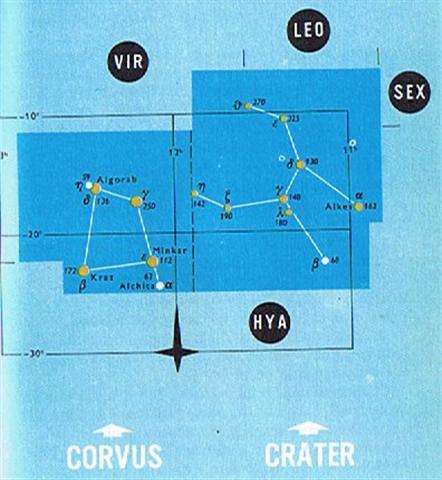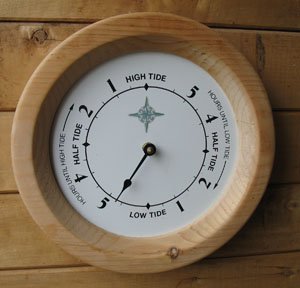|
3 |
 |
 |
branch not broken |
|
Ca7-15 |
Ca7-16 |
|
4 |
branch broken |
 |
 |
|
Ca7-23 |
Ca7-24 |
Halfway through the cycle (which
has 8 periods) waxing moon meets
his end. Halfway through the
year also waxing sun meets his
end. Once we have understood
that
the cycle of the moon is more
fundamental than the cycle of
the sun several pieces of the
puzzle are more easily
understood.
I even dare project the black
4th quarter of the year back to
it presumed origin, the moon
cycle, and predict that we
sooner or later will find
evidence of the 4th quarter of
the month being black too.
"... Although it
belongs to the southern sky, the
Corvus constellation
remains visible in theory during
the summer months, albeit very
low on the horizon, even in
latitudes where it passes
unnoticed much more because of
the length of the Arctic days
than through its position in the
sky ...

The Navajo ...
who are Athapaskan from the
north, and who have brought with
them very archaic motifs ... in
addition to the story of the
'split' twins ... were perfectly
familiar with the Corvus
constellation, of which they
give the following analysis:
'feet far apart' (the irregular
quadrilateral); 'his feathers';
'his body'; 'his stick';
'his fire' ...
Even if
north-west American Indians had
been acquainted with the
Corvus constellation and had
given it a name, there is no
reason why this name should have
been the one that we have used
since the times of the Greeks.
This being so, it is all the
more curious to discover among
them myths which, without
connecting the bird with a
constellation, tell a story
about it which is almost
identical with the one current
among the Greeks to explain the
origin of the Corvus
constellation:
M593.
Takelma. 'The thirsty raven'
There was no
water in the village. The lakes
and rivers were dry. Raven and
Crow, two young girls who were
having their first menstrual
courses, were told to go and
draw water from the ocean.
Finding the journey too long,
Raven decided just to urinate
into her basket-bucket. She
decieved no one and was severly
scolded. Crow returned much
later but with drinking water.
As a punishment,
Raven was condemned never to
find water in the summer; only
in winter would she find
something to drink. For that
reason the Raven never drinks
during the hot months; she
speaks with a raucous voice
because of her dry throat ...
(The Naked Man)
|
According to Allen:
"... the bird, being
sent with a cup for
water, loitered at a
fig-tree till the
fruit became ripe,
and then returned to
the god with a
water-snake in his
claws and a lie in
his mouth, alleging
the snake to have
been the cause of
the delay.
In punishment he was
forever fixed in the
sky with the Cup and
the Snake; and, we
may infer, doomed to
everlasting thirst
by the guardianship
of the Hydra over
the Cup and its
contents.
From all this came
other poetical names
for our Corvus -
Avis Ficarius,
the Fig Bird; and
Emansor, one who
stays beyond his
time; and a belief,
in early folk-lore,
that this alone
among birds did not
carry water to its
young ..."
If,
as I suspect, Corvus
equals GD11:

then
he may be the summer
solstice solar bird.
The one who stays
beyond his time,
Emansor, is a
suitable name for
sun at solstice. If
he delays until
fruit ripens, then
his season may be
longer than that,
though figs perhaps
ripen just after
summer solstice.
Sun
is high in the sky -
he must be a bird -
and the heat makes
people thirsty. |
The
menstruating girls suggest
the moon, maybe one of them
(Raven) was waxing moon and
the other (Crow) the waning
moon?
The Fig Bird
blamed the snake (2nd
quarter) while waiting for
the fruit (hua) to
ripen. The fig tree
parallels Rakau.
I searched
through all 101 manu rere
glyphs in Tahua and
without question the 4
redmarked below are
exceptional in pointing
skywards with their beaks:
 |
 |
 |
 |
 |
 |
 |
 |
|
Aa3-49 |
Aa3-50 |
Aa3-51 |
Aa3-52 |
Aa3-53 |
Aa3-54 |
Aa3-55 |
Aa3-56 |
 |
 |
 |
 |
 |
 |
 |
 |
|
Aa3-57 |
Aa3-58 |
Aa3-59 |
Aa3-60 |
Aa3-61 |
Aa3-62 |
Aa3-63 |
Aa3-64 |
Is it the
thirsty beak we see at left
in Aa3-50 (manu kake)?
The importance of the moon
cycle may be due to the
tides:
"... Raven,
the demiurge and trickster,
was able to escape from the
rising waters by 'flying to
the highest cloud in the
sky, and hanging on there by
his bill'.
There is
indeed an unusually sharp
hook at the end of the bills
in the red-marked manu
rere glyphs.
When the
waters had subsided, he came
back down to earth and
arrived at the house of an
old woman who was mistress
of the tides. She could not
believe her eyes when she
saw that he had sea-urchins
to eat, because at that time
the tide was always high and
sea-produce could never be
harvested since the waves
never went back.
Angered by
his hostess's incredulity,
Raven stuck the spikes left
over from the sea-urchins
into her body and commanded
the sea to withdraw:
'Finally everything became
dry - this was the lowest
tide that ever was. All
kinds of salmon, whales,
seals and other creatures
lay on the sand flats.
People collected enough from
that ebb tide to last them
for a long, long time.' This
is the origin of the tides
..." (The Naked Man)
At high tide, I suppose,
with no food to collect from
the sand flats, people should
instead be occupied with celestial
matters.
Twice a day the clock of the
tides cycled around,
and without doubt ancient
peoples understood it was on
order from the moon ('the
old woman who was mistress
of the tides').
"... The
various
frequencies
of orbital
forcing
which
contribute
to tidal
variations
are called
constituents.
In most
locations,
the largest
is the
'principal
lunar
semidiurnal'
constituent
...
Its period
is about 12
hours and
25.2
minutes,exactly half
a tidal
lunar day,
the average
time
separating
one lunar
zenith from
the next,
and thus the
time
required for
the Earth to
rotate once
relative to
the Moon.
This is the
constituent
tracked by
simple tide
clocks ..."
(Wikipedia)









